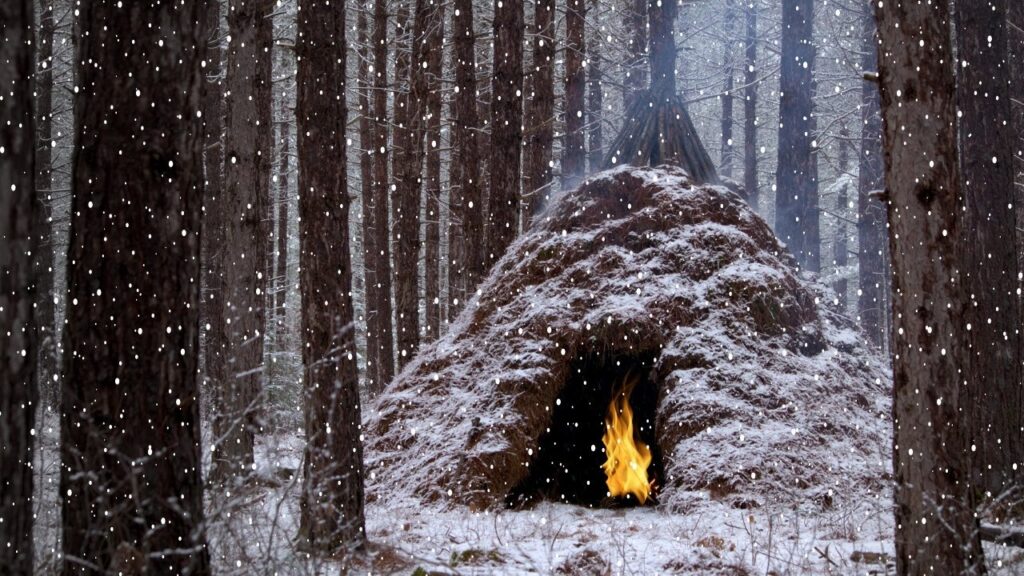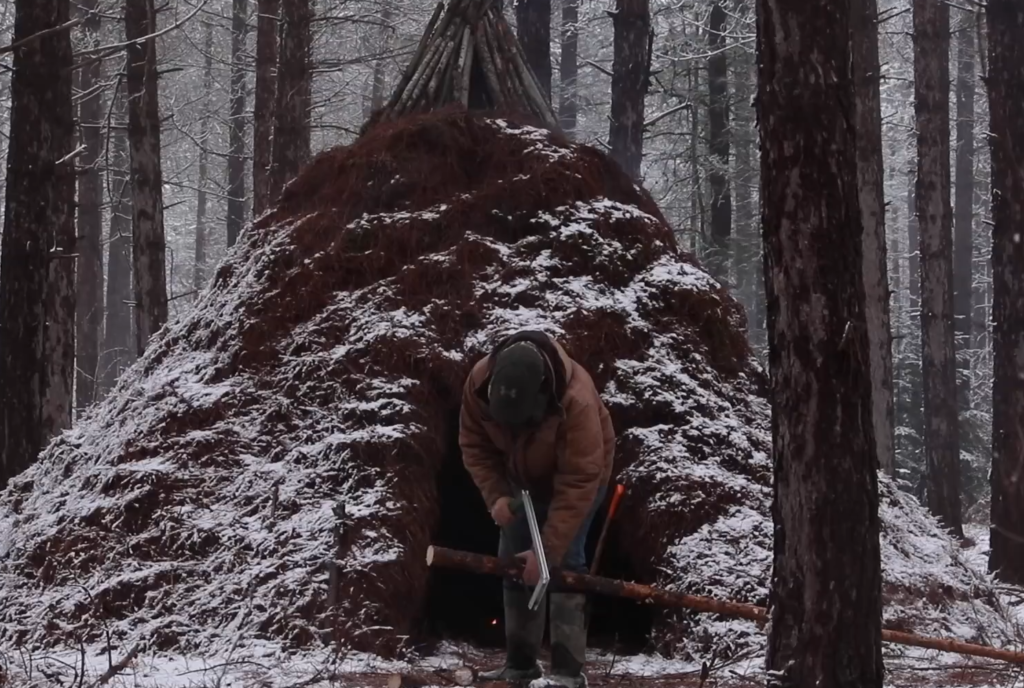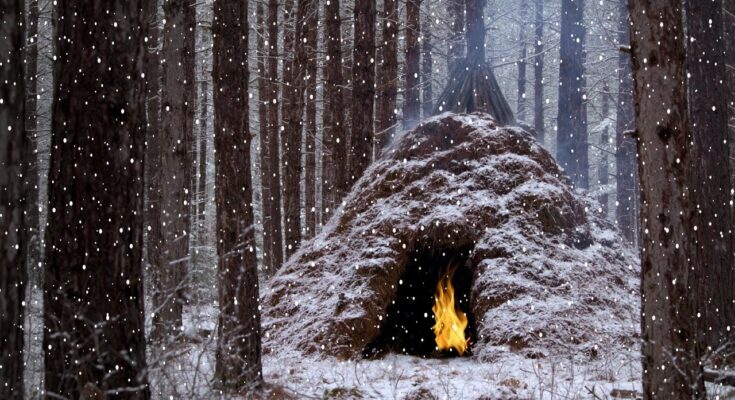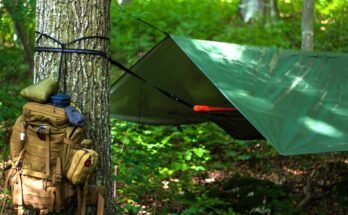The wilderness transforms into an unforgiving yet breathtaking landscape when a heavy snowstorm rolls in. For a solo bushcrafter, it’s both a challenge and an opportunity to test survival skills against nature’s raw power. As the wind howls and snow blankets the forest, every decision becomes critical, from selecting a safe campsite to managing warmth and food.

Finding shelter is the first priority. A dense forest offers some protection from the wind, but constructing a sturdy lean-to or snow cave is essential for insulation. Snow, paradoxically, is an excellent insulator when properly packed, trapping body heat and shielding against the freezing air.
Fire becomes the heart of survival in such extreme conditions. Gathering dry wood amid a blizzard is no easy task, but standing deadwood and inner bark can provide fuel even in the harshest weather. Once ignited, the fire serves as a source of warmth, a means to melt snow for drinking water, and a psychological boost against the isolation and cold.

Food preservation and preparation also take a unique turn in freezing conditions. Simple meals, such as dried meat, nuts, or dehydrated soup, become crucial, as cooking complex dishes in a storm is nearly impossible. Hydration is equally important, requiring careful melting of snow to avoid dehydration.
Despite the hardships, there’s an undeniable beauty in being alone in the wilderness during a snowstorm. The muffled silence, the glistening trees, and the untouched white expanse create a surreal experience. It’s a test of endurance, patience, and respect for nature’s might.
Solo bushcraft in a heavy snowstorm is not just about survival—it’s about embracing the raw, untamed wilderness and finding solace in the solitude of nature’s most extreme conditions.


